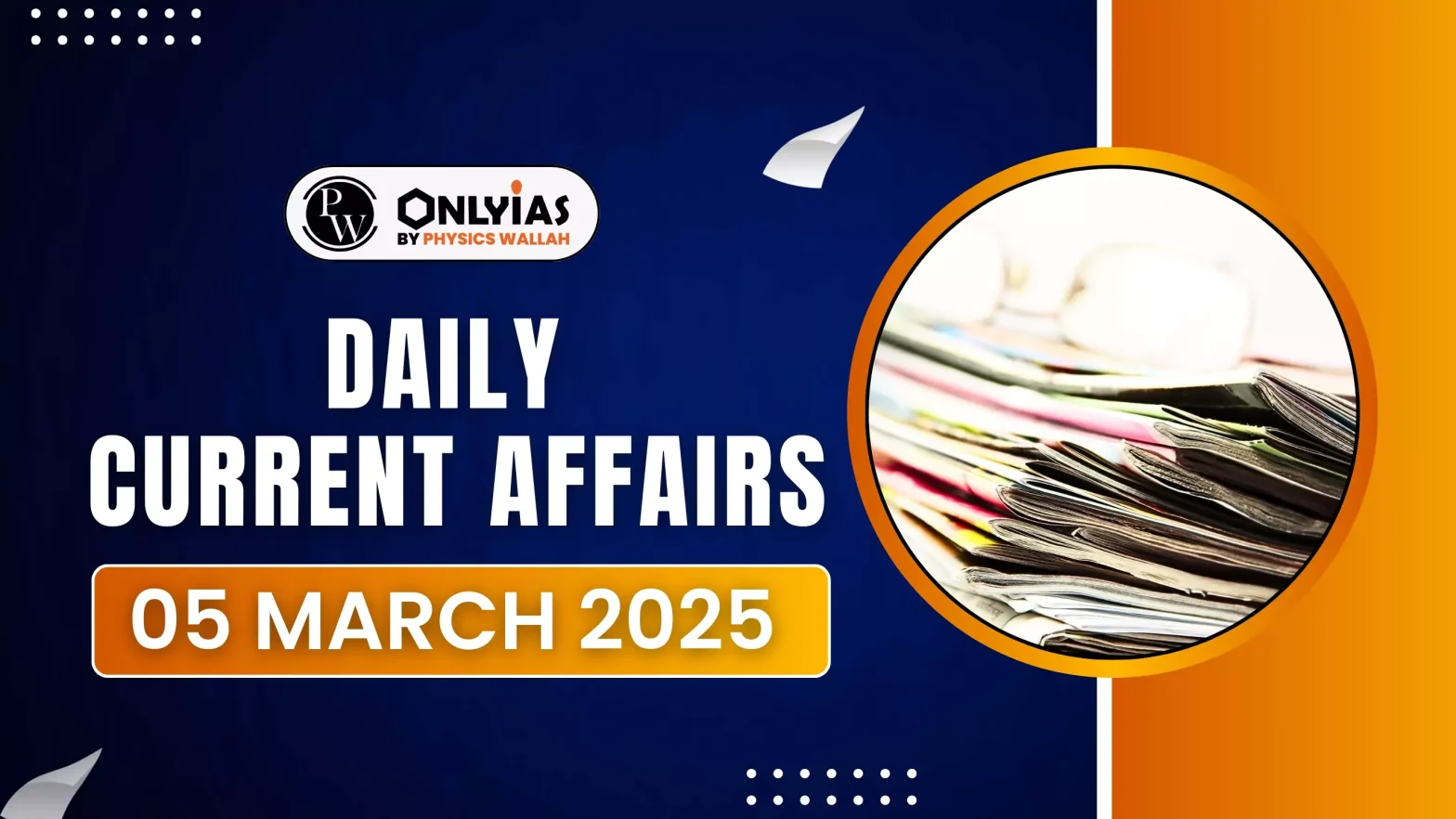NITI Aayog’s recent report, From Borrowers to Builders: Women’s Role in India’s Financial Growth Story, highlights a 42% increase in women actively monitoring their credit scores.
Key Findings of the Report
- Rise in Credit Awareness: As of December 2024, 27 million women were actively monitoring their credit.
- Increased Women’s Share in Credit Self-Monitoring: Grew to 19.43% in 2024 from 17.89% in 2023.
Success Stories of Women Financing:
- Grameen Bank: Founded by Nobel Laureate Muhammad Yunus, Grameen Bank revolutionized microfinance by prioritizing women, who account for over 97% of its borrowers.
- Women’s World Banking: It is a global nonprofit that has facilitated financial access for millions of women across Asia, Africa, and Latin America.
|
- Regional Trends:
- Growth in non-metro regions (48%) outpaced metro areas (30%).
- Southern states led with 10.2 million women self-monitoring credit.
- Northern and central states (Rajasthan, Uttar Pradesh, Madhya Pradesh) saw the highest CAGR in active women borrowers.
- Women’s Participation in Loans
- Business Loans: Women’s share in business loan origination increased by 14% since 2019.
- Gold Loans: Women’s share grew by 6%, with 35% of business borrowers being women by December 2024.
About Credit Score
- Credit Score: A credit score is a three-digit number that reflects an individual’s creditworthiness.
- It ranges between 300 to 900 in India, with a higher score indicating better credit health.
- It is used by banks and financial institutions to assess the risk of lending to a person.
- Factors used to calculate the credit score: Repayment history, Types of loans, Length of credit history, Debt utilization, and Application for new accounts.
|
Reasons for Rising Female Participation in the Financial Sphere
- Female Labour Force Participation: Women are increasingly entering formal and informal sectors, contributing to economic productivity.
- The Worker Population Ratio (WPR) for women aged 15 years and above has risen from 22 percent in 2017-18 to 40.3 percent in 2023-24.
- The Labour Force Participation Rate (LFPR) for women has increased from 23.3 percent to 41.7 percent in the same period,
- Example: The advent of platforms like Swiggy, Zomato, Urban Company etc has enabled women to participate in the gig economy, offering flexible work opportunities and financial independence.
- Rise In Women Entrepreneurs: According to the World Bank, women-owned businesses in India generate an estimated 8 million job opportunities, underscoring their substantial importance.
- According to a 2021 report from the NITI Aayog, women entrepreneurs command a 20 per cent share of all enterprises in India.
- Financial Inclusion: Initiatives like Pradhan Mantri Jan Dhan Yojana (PMJDY) have led to the increase in women-owned bank accounts and integrated more women into the formal financial system, making them aware of credit scores.
- A total of 54.58 crore JanDhan accounts have been opened till 15.01.2025, of which 30.37 crore (55.7%) belong to women.
- Growth of Digital Financial Tools
- Ease of Access: Platforms like CIBIL, Experian have made it easier for women to check their credit scores online.
- Mobile Banking and Apps: The proliferation of mobile banking apps and fintech platforms offering free credit score checks has empowered women to monitor their credit scores regularly.
- Financial Independence: As more women earn and manage their own incomes, they are taking proactive steps to build and monitor their credit profiles.
- Education and Employment: Higher education levels and increased employment opportunities have made women more financially savvy.
- Example: India’s higher education has seen strong growth over the last decade, with a 38.5% rise in female enrolment.
- Women with higher education are more likely to understand financial planning, savings, and investment strategies.
Government Initiatives to Promote Financial Inclusion and Independence Among Women
- Pradhan Mantri Jan Dhan Yojana (PMJDY): Provides zero-balance bank accounts, overdraft facilities, and direct benefit transfers (DBTs) to enhance financial access.
- Stand-Up India Scheme: Facilitates collateral-free loans between ₹10 lakh and ₹1 crore for women and SC/ST entrepreneurs to start businesses.
- Pradhan Mantri Mudra Yojana (PMMY): Offers microfinance loans under Shishu, Kishor, and Tarun categories, enabling small and women-led enterprises to access credit.
- ₹2.22 lakh crore in loans disbursed to 4.24 crore women entrepreneurs in FY 2023-24, boosting small businesses.
- Women Entrepreneurship Platform (WEP): A NITI Aayog initiative that provides mentorship, credit access, and business support to women entrepreneurs.
- Mahila E-Haat: An online marketing platform by the Ministry of Women & Child Development, enabling women entrepreneurs to sell products directly.
- PM SVANidhi Yojana: The Pradhan Mantri Street Vendor’s Atmanirbhar Nidhi (PM SVANidhi) Yojana aims to provide collateral-free microloans to street vendors for business revival and expansion.
- ₹5,939.7 crore disbursed to 30.6 lakh women street vendors by December 2024, enhancing financial stability.
- Udyam Registration: Udyam Registration is a government portal launched by the Ministry of MSME to provide formal recognition to Micro, Small, and Medium Enterprises (MSMEs), enabling easier access to credit, subsidies, and government schemes.
- 40% of MSMEs in India are now women-owned, reflecting growing participation in entrepreneurship.
- The Start-up Village Entrepreneurship Programme (SVEP), a sub-scheme under Deendayal Antyodaya Yojana – National Rural Livelihoods Mission (DAY- NRLM) supports the SHG women or their family members to set up small enterprises.
- SVEP has supported 3.13 lakh rural enterprises as on October, 2024.
|
Challenges In Women’s Financial Participation
- Gender Wage Gap: Women often earn less than their male counterparts for the same work, impacting savings and investment potential.
- The Oxfam India Discrimination Report 2022 highlighted the gender pay gap in India, with women facing bias in recruitment and pay across the country.
- Limited Access to Credit: Many women, particularly in rural areas, struggle with securing loans due to lack of collateral and financial literacy.
- Example: 79% of women owned businesses are self-financed, with only 7% of MSME credit directed to women.
- Societal Norms and Biases: Deep-rooted cultural norms and patriarchal attitudes discourage women from taking leadership roles or engaging in high-risk financial decisions.
- Increasing Prosperity: As household incomes rise, women – particularly in urban areas, are leaving the workforce because they no longer need to engage in physically demanding labour.
- Improved financial stability enables some women to prioritise their family responsibilities over pursuing employment.
- Work-Life Balance: The dual burden of professional and domestic responsibilities often limits women’s career growth.
- Credit Aversion and Poor Banking Experiences: Many women hesitate to seek credit due to fear of debt, high-interest rates, and limited financial literacy.
- Additionally, complex loan procedures, and gender bias discourage them from actively engaging with formal financial institutions.
Inspiring Future Generations: Women-Led Startups Shaping India
- Niharika Bhargava (The Little Farm Co, Gurgaon): Reviving India’s condiment heritage, she partners with 100+ farmer networks, ensuring 70% of her workforce are women.
- Her preservative-free products celebrate tradition while creating rural employment.
- Dr. Shalima Ahamed (Coco Roots Organic, Kozhikode): She crafts eco-friendly hair care solutions, including neem wood combs, blending sustainability with holistic wellness.
- Radhika Lakhotia (Spentigo Sustainability, Kolkata): Innovating with “Fit Flour” from upcycled brewery grains, she tackles malnutrition and food waste while empowering rural women, backed by IIM Bangalore and industry leaders.
|
Way Forward
- Expand Women’s Access to Business Loans
- Implement policies for affordable credit and reduced interest rates.
- Collect sex-disaggregated financial data to inform better policy decisions.
- Strengthen credit guarantee schemes to reduce collateral requirements.
- Develop Gender-Smart Financial Products
- Design financial products that address women’s lifecycle needs, social norms, and structural barriers.
- Promote customized loan offerings, flexible repayment options, and insurance solutions for women entrepreneurs.
- Reimagine Credit Risk Assessment: Leverage Artificial Intelligence (AI) and big data analytics to create unbiased, gender-inclusive credit assessment models.
- Reduce reliance on traditional collateral-based evaluations and explore alternative creditworthiness indicators.
- Enhance Credit Readiness: Promote digital transactions, financial literacy, and digital bookkeeping for better credit management.
- Support business formalization to improve women’s access to mainstream financial services and government incentives.
Conclusion
Women are not just beneficiaries of India’s financial growth story; they are active contributors and drivers of this growth.
- Strengthening their financial inclusion is key to achieving the Viksit Bharat goal of a 70% female workforce participation by 2047, ensuring inclusive and sustainable economic progress.
![]() 5 Mar 2025
5 Mar 2025

